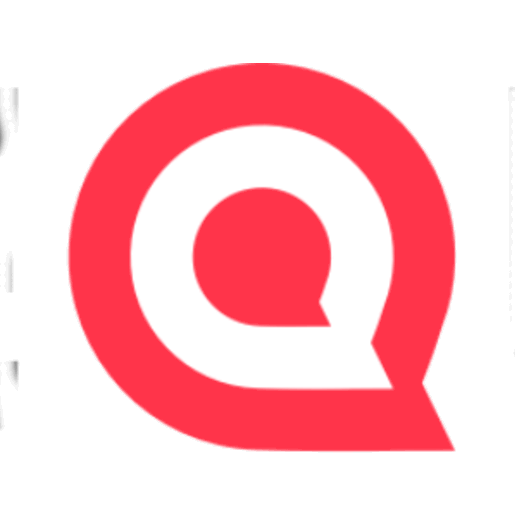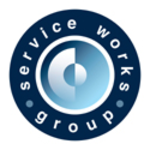Description

Asset Mapping

Xenia
Comprehensive Overview: Asset Mapping vs Xenia
Asset Mapping is a technology platform that focuses on the visualization, tracking, and optimization of physical assets. This can include anything from machinery and equipment in industrial settings to systems and infrastructure in smart buildings or cities. The platform provides a way for organizations to monitor the status and performance of these assets in real-time, offering insights and analytics that can drive more efficient operations and better decision-making.
a) Primary Functions and Target Markets
Primary Functions:
- Asset Monitoring: Real-time tracking and visualization of assets to understand their location and status.
- Data Integration: Combines data from various sources (IoT devices, sensors, etc.) to provide a comprehensive overview.
- Analytics and Reporting: Offers insights through dashboards and reports to improve performance and predict maintenance needs.
- Lifecycle Management: Helps manage assets throughout their lifecycle, from acquisition to disposal.
- Incident Management: Identifies and alerts about issues that require immediate attention, minimizing downtime.
Target Markets:
- Smart Buildings and Facilities Management: Enhancing operational efficiency and tenant experience.
- Industrial and Manufacturing Sectors: Improving equipment utilization and reducing maintenance costs.
- Healthcare Facilities: Ensuring that critical medical equipment is operational and compliant with regulatory standards.
- Smart Cities: Supporting infrastructure management and urban development plans.
- Logistics and Supply Chain: Enhancing asset tracking across supply networks.
b) Comparison of Market Share and User Base
- Market Share: While specific market share data can fluctuate, Asset Mapping’s growth has been supported by the increasing demand for IoT solutions and digital transformation initiatives across various industries. It often competes with broader IoT platforms that provide similar asset tracking and management functionalities.
- User Base: The user base primarily consists of facilities managers, operations managers, engineers, and decision-makers in sectors such as real estate, industrial manufacturing, and smart city planning. Adoption rates are influenced by the industry’s digital readiness and investment capacity.
c) Key Differentiating Factors
- Ease of Integration: Asset Mapping platforms typically offer strong integration capabilities, allowing companies to pull in data from diverse sources, which makes them customizable to specific business needs.
- User Interface and Experience: A focus on visual representation of data, such as interactive maps and dashboards, enhances user experience and makes complex data more accessible.
- Scalability: Asset Mapping is designed to handle the needs of varying organization sizes, scaling from small facilities to citywide deployments.
- Focus on Specific Verticals: Some providers tailor their offerings to specific industries, giving them an edge in domains like healthcare or manufacturing by addressing unique sector challenges.
- Predictive Analytics Features: Advanced analytics can predict equipment failure before it happens, enabling preemptive maintenance and reducing downtime.
- End-to-End Solutions: Some companies provide hardware, software, and the services required to implement a comprehensive asset management strategy, which can be a differentiating factor for organizations seeking a one-stop solution.
In summary, Asset Mapping is pivotal for businesses aiming to optimize their asset management processes. With a focus on real-time analytics and integration capabilities, these solutions cater to a range of industries, each adapting to the platforms based on their specific operational needs.
Contact Info

Year founded :
2012
+44 20 7060 6014
Not Available
United Kingdom
http://www.linkedin.com/company/asset-mapping

Year founded :
Not Available
Not Available
Not Available
France
Not Available
Feature Similarity Breakdown: Asset Mapping, Xenia
To provide a comprehensive feature similarity breakdown for Asset Mapping and Xenia, let's delve into each aspect:
a) Core Features in Common
Both Asset Mapping and Xenia are platforms designed to help organizations track, manage, and optimize their assets. Here are some core features they typically have in common:
-
Asset Tracking: Both platforms allow users to track physical assets in real-time using a combination of IoT devices, GPS, and cloud-based technologies.
-
Data Integration: They support integration with other systems, enabling seamless data exchange and consolidation from various sources.
-
Reporting and Analytics: Both offer reporting tools and analytics features, enabling users to create customizable reports and dashboards for better decision-making.
-
User Management: These platforms provide functionalities for managing multiple users, with role-based access controls to ensure security.
-
Alerts and Notifications: They can send alerts and notifications to users based on predefined conditions or real-time events concerning asset status.
b) User Interface Comparison
In comparing the user interfaces of Asset Mapping and Xenia, we generally observe:
-
Asset Mapping: Typically focuses on real-time visualization, presenting assets on maps or dashboards that display locations and status updates in a highly visual format. The interface is often designed to make geographical data interpretation straightforward and intuitive, making it useful for users needing a spatial overview.
-
Xenia: May offer a more generalized management interface, potentially focusing more on operational functionality and workflow optimization. Its UI might incorporate more forms, lists, and detail views, designed to streamline tasks associated with asset lifecycle management.
Both aim for user-friendly designs, but the emphasis could differ based on the core use cases they target, with Asset Mapping emphasizing geolocation and Xenia potentially focusing more on operational detail.
c) Unique Features
-
Asset Mapping:
- Geospatial Analysis: This platform may offer advanced geospatial analysis tools, which are particularly beneficial for users who need detailed geographical information about their assets.
- Map Integration: Stronger emphasis on integrating with various mapping services such as Google Maps, OpenStreetMap, etc., providing detailed real-time geographical asset data.
-
Xenia:
- Maintenance Scheduling: Xenia might include more robust features for scheduling and managing asset maintenance tasks, ensuring assets are serviced on time.
- Workflow Automation: Could offer advanced tools for automating asset management workflows, streamlining operations, and reducing manual effort in repetitive tasks.
These unique features reflect the primary focus areas of each platform, catering to different aspects of asset management based on user needs.
Features

Not Available

Not Available
Best Fit Use Cases: Asset Mapping, Xenia
Asset Mapping and Xenia are digital tools that can serve businesses looking to enhance their operational efficiency, particularly through asset management and facility operations. Each has its own distinct strengths, making them suitable for different contexts or business requirements.
Asset Mapping
a) Business Types and Projects:
- Large Enterprises with Complex Infrastructure: Asset Mapping is ideal for businesses with substantial physical infrastructure needing a detailed overview of their assets. This includes industries such as manufacturing, utilities, and construction.
- Smart Cities Initiatives: Governments or municipalities implementing smart city projects can use Asset Mapping to manage public assets like utilities, transportation systems, and public facilities.
- Facilities Management: Corporations that need to manage large multi-site operations, such as universities, healthcare campuses, or large corporate buildings.
- Real Estate Management: Companies managing large property portfolios can utilize Asset Mapping to oversee asset conditions and performance efficiently.
b) Scenarios for Preference:
- Need for Integration: Asset Mapping is preferred when there is a need to integrate with existing systems and leverage IoT devices for real-time data.
- Geographical Visualization: When businesses require a strong visual representation of asset location and status on maps for better spatial analysis.
- Complex Asset Tracking: When dealing with a wide variety of assets that require detailed tracking, monitoring, and strategic planning.
Xenia
a) Business Types and Projects:
- Small to Medium-Sized Enterprises (SMEs): Xenia is optimally designed for SMEs that need streamlined operations and asset management without the complexity required by larger entities.
- Hospitality Industry: Especially suited for hotels and resorts needing efficient housekeeping, maintenance, and guest service operations.
- Property Management: Especially for entities managing residential or commercial properties, focusing on maintenance workflows and tenant services.
- Retail Chains: Retail businesses that require simplified management of store equipment and facilities across multiple locations.
b) Scenarios for Preference:
- User-Friendly Interface Requirement: Xenia is chosen for its easy-to-use interface, which is vital for businesses with staff that may not be tech-savvy.
- Operational Efficiency Focus: Best for companies looking to streamline operations and improve team collaboration on day-to-day tasks.
- Mobile Workforce Management: When the priority is managing a mobile workforce efficiently with features like task assignments and real-time updates.
Catering to Different Industry Verticals and Company Sizes:
-
Industry Verticals:
- Asset Mapping can cater to industries with complex infrastructures like utilities, logistics, and construction because of its robust asset tracking and integration capabilities.
- Xenia, on the other hand, excels in service-oriented industries like hospitality, property management, and retail due to its focus on operational process efficiency.
-
Company Sizes:
- Large Corporations and Enterprises: Tend to benefit more from Asset Mapping due to its capability to handle complex integrations and vast asset management needs.
- Small to Medium-Sized Businesses: More inclined toward Xenia for its cost-effectiveness and straightforward setup, focusing on efficiency without requiring extensive IT resources.
In summary, choosing between Asset Mapping and Xenia depends heavily on the specific needs of the business or project, such as the complexity of asset management, the necessity for real-time data integration, ease of use, and the industry sector they operate in. Each offers valuable tools but caters to distinct aspects of asset management and operational efficiency.
Pricing

Pricing Not Available

Pricing Not Available
Metrics History
Metrics History
Comparing undefined across companies
Conclusion & Final Verdict: Asset Mapping vs Xenia
When evaluating Asset Mapping and Xenia, it's important to consider their unique strengths and weaknesses to determine which product offers the best overall value.
Conclusion and Verdict
a) Best Overall Value:
Determining the best overall value between Asset Mapping and Xenia depends heavily on the specific needs and priorities of the user. However, if we generalize:
-
Asset Mapping might be the best value for organizations focused on comprehensive tracking and real-time management of physical assets. It excels in providing a detailed overview of asset locations and conditions, ideal for industries where asset management is critical.
-
Xenia could provide better value for those interested in streamlined operations and task management. It often presents a user-friendly interface and integration capabilities that appeal to businesses looking for efficiency in day-to-day operational workflows.
b) Pros and Cons:
-
Asset Mapping:
- Pros:
- Provides robust tracking and real-time data on asset locations.
- Helps in effective maintenance scheduling and condition monitoring.
- Useful for mitigating asset loss and improving asset utilization.
- Cons:
- May require significant setup time and integration with existing systems.
- Could involve higher operational costs due to its comprehensive nature.
- Might be complex for users with minimal tech expertise.
- Pros:
-
Xenia:
- Pros:
- Offers ease of use with a focus on improving operational efficiency.
- Good integration with other software tools for streamlined workflows.
- Often caters to a wider range of industries with task and project management needs.
- Cons:
- May lack depth in asset-specific tracking compared to Asset Mapping.
- Could fall short in industries that require highly specialized asset oversight.
- Some users might find customization options limited compared to more dedicated asset tools.
- Pros:
c) Recommendations:
For users deciding between Asset Mapping and Xenia, here are some specific recommendations:
-
Industry Needs: If your primary concern is asset tracking, particularly for industries like manufacturing, logistics, or heavy equipment, Asset Mapping might prove more beneficial. Its strengths lie in detailed monitoring and asset lifecycle management.
-
Operational Efficiency: For businesses looking for a system that enhances general operational efficiency and workflow management, Xenia is likely more suitable. It's particularly relevant for service-oriented sectors or roles that require coordination among different teams.
-
Scalability and Integration: Consider how each solution scales with your business. If current systems must integrate seamlessly with the new platform, evaluate which product better supports these needs.
-
Trial and Feedback: Engage in trial periods offered by each platform if available. Collect feedback from your team to ensure user-friendliness and determine which system aligns with daily operational needs.
Ultimately, choosing between Asset Mapping and Xenia should be based on aligning the software capabilities with your specific business objectives, existing infrastructure, and the technical acumen of your team.
Add to compare
Add similar companies




